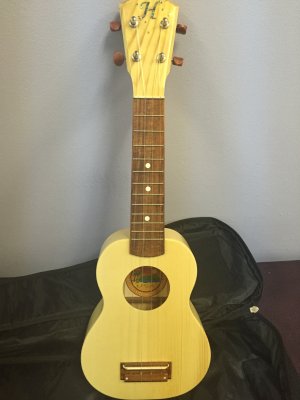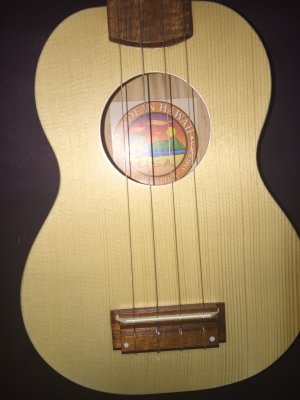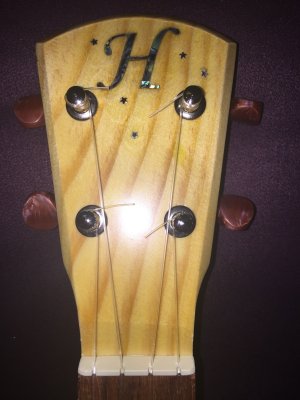For you Pops aficionados, one thing I've been curious about is the use of pine for the back and sides. I have no doubt about the tonal qualities, as judged by Pop's meticulousness and listening to sound samples. But i wonder about pine being a softer wood than those usually used for backs and sides.
The most common back and side woods are all considered hard woods, I believe. Mahogany, koa, rosewood, sapele, maple, walnut, oak, etc. Unless I'm mistaken, or there is a subspecies difference, pine is much softer. I wonder if there are any concerns about how well they will hold up over time. I doubt they'd crack so much as deform their shape.
I'm sure its not an issue and that Pops likely considered it when he developed these, but I've been curious about it since learning about his preference for that wood.
Gustophersmob, I have posted above what I know from Pops in his own words. My personal response to your question would be that when one is purchasing a Wow ukulele, they are usually looking for three things that are important to them: 1. an ukulele noted for its excellence in tone, clarity, volume, ease of play, sustain, and resonance, 2. An ukulele handmade by Pops, himself, and 3. Affordability.
This is what the Wow provides. Pops will certainly make an ukulele with Koa, Mango, maple or any other tonewood and it can be decked out to the hilt. I think time will tell how well the softer pine holds up, but the original idea was to use a less expensive and easier to obtain wood to make a truly affordable ukulele. The original Wows were all of that and truly affordable but as time went on, customers wanted GOTOH tuners, edge binding, abalone inlay, ebony fretboards and bridges, curved backs, edging around the soundhole, side sound ports, the five-point crown headstock, etc. All of these items have kicked up the time and price of the simple Wow, however, through all of it, the new Wows sound just as great as the original, less adorned Wows.
After spending a month with Pops in the shop this past February, I learned that whether an uke is made with Koa or Pine, the amount of time, patience, focus, and skill that the luthier/artist puts in is the same. The wood used changes the tone or looks, but the idea of Pine being less expensive is now shown to be relatively minor. The amount of work, effort, and skill that goes into a pine vs a koa ukulele is the same, but your question as to the longevity of the wood is an excellent question, and only time will tell. Pops did change from a pine neck to a sapele neck to give more structure. The softer body will be more susceptible to dings if the uke is treated roughly, but still, I feel that most who purchase the Wow do so for the sound and not the looks.
One quick story. My dad had Parkinson's Disease and as part of his therapy, I taught him to play the ukulele. I gave him a Wow to play. One day, he raised his electric reclining seat and he did not know that the uke was under it and the top face of the uke was crushed and cracked. What surprised me the most was that we now had a Wow that looked like it belonged to Willie Nelson, but still put out the same amazing sound.








